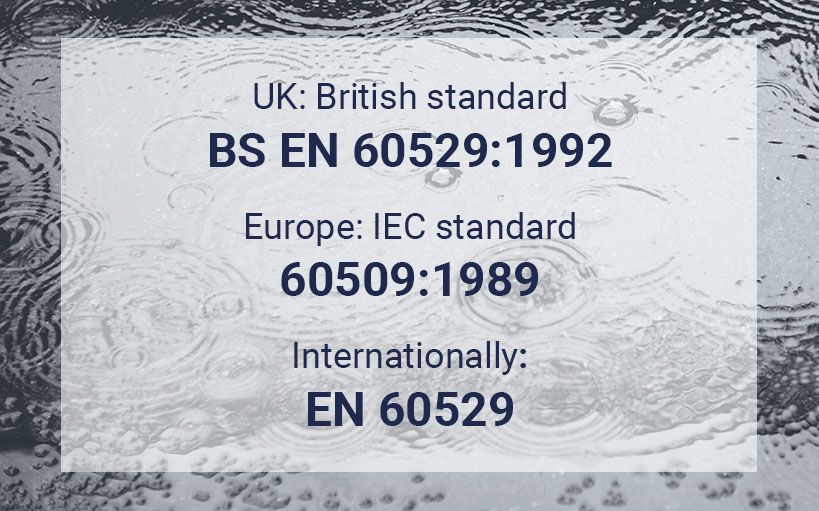Telephone 01543 270270

IP ratings (or Ingress Protection) describe the protection offered by a product’s casing against penetration of foreign objects including dust and liquids. It also describes the level of protection of users, for example; by preventing contact between hands or fingers and electrical components.
Many products are marketed as being “waterproof” or “shower resistant”, but what do these words really mean? IP ratings, on the other hand, provide parameters for each classification so the user knows exactly what the product is capable of withstanding. Products undergo vigorous testing during the certification process so the customer can be assured of the quality of the product they are using.
Users can be confident of the safety of IP rated components thanks to the universality of the rating system. It is standardised by the following legislation:The protections offered by products with different IP ratings are standardised in most regions according to the following legislation:
UK: British standard BS EN 60529:1992
Europe: IEC standard 60509:1989
Internationally: EN 60529
All IP ratings take the form of IPXX (e.g. IP69). The first number refers to protection from foreign bodies and particles (like dust). The second number denotes the protection against moisture. If a product has not been tested for both types of ingress, the missing result will be replaced with an “X” or a 0 (e.g. IPX4, IP50)

|
|
First digit: protection from foreign bodies |
Second digit: protection from moisture |
|
0/X |
Not rated |
Not rated |
|
1 |
Protection against solid objects larger than 50mm
E.g. accidental contact of hands but not against deliberate access. |
Protection against vertically falling drops such that function of components will not be impacted if the product is upright. |
|
2 |
Protection against solid objects larger than 12mm
E.g. accidental finger contact. |
Protection against vertically dripping water when enclosure is tilted up to 15° off vertical. |
|
3 |
Protection against solid objects larger than 2.5mm
E.g. wires or tools. |
Protection against direct moisture spray at angles up to 60° from the vertical. |
|
4 |
Protection against solid objects larger than 1mm
E.g. thin tools, wires or building materials and larger insects. |
Protection against splashing water from any direction, such that function of components will not be impacted. |
|
5 |
Partial protection against dust and other particulates, but at a quantity that will not damage or interfere with operation of internal components. |
Protection against low-pressure jets (6.3 mm) from any direction such that function of components will not be impacted. |
|
6 |
Full protection against dust and other particulates. |
Protection against powerful jets (12.5 mm nozzle) from any direction. |
|
7 |
|
Protection against full immersion for up to 30 minutes at depths between 15 cm and 1 metre such that function of components will not be impacted. |
|
8 |
|
Protection against continuous immersion under higher pressure. Conditions of the test should be specified by the manufacturer. |
|
9 |
|
Protection against high-pressure jet sprays or steam cleaning. Commonly used in automotive products (IEC 60529 and ISO 20653) |
The M890 LED sidemarker has been rated at IP67. Using the guide above, we can determine that this light has a rating of 6 for foreign body ingress, so it is fully protected against infiltration by particulates. The second number, 7, shows that it can withstand high immersion in water for up to 15 minutes. The electrical components are therefore highly protected against ingress.
IP ratings of lighting components on cars, lorries and other road vehicles is vitally important to the functioning of the component and the safety of the users and the overall circuit. Damage caused to a component like a light can have wide reaching consequences, including a risk to life.
Due to their position and use, automotive lights are exposed to harsh environments that the internal electrical components must be protected from. Weather, dirt and cleaning processes all have the potential to compromise components and circuitry. It is also important to consider other less obvious sources of ingress such as insects, fuel particulates, oil, steam or condensation. Chemical corrosion as a result of a build up of matter on or around the component or circuitry might also compromise the system. As always, please be sure that you are compliant with all relevant legislation.